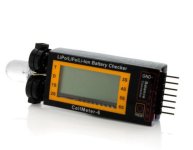Peter Brigg
10 W
- Joined
- Jan 13, 2012
- Messages
- 89
I have read LiFePo4 cells last longer if the charging current does not pulse ie the best charging current is a flat voltage rather than a pulsing current/voltage which may be better for lead acid batteries. Is there any truth to this and is there a better type of controller for these lithium cells than the MPPT type?
I have made a number of 12v Li-ion and LiFePo4 batteries for uses such as camping lights and refrigeration. With just 4 cells to monitor I do without a BMS and monitor each cell voltage-I try to get matched cells to start with. If one cell is too high a simple load like a 6v globe is used to being it down (an alarm on my mobile warns to check for an over discharge). Are others using 12v batteries in a similar way? I have come to distrust BMS however with a 36v bike battery I realise monitoring each cell can be tedious-so I use a BMS for that battery.
I have made a number of 12v Li-ion and LiFePo4 batteries for uses such as camping lights and refrigeration. With just 4 cells to monitor I do without a BMS and monitor each cell voltage-I try to get matched cells to start with. If one cell is too high a simple load like a 6v globe is used to being it down (an alarm on my mobile warns to check for an over discharge). Are others using 12v batteries in a similar way? I have come to distrust BMS however with a 36v bike battery I realise monitoring each cell can be tedious-so I use a BMS for that battery.


